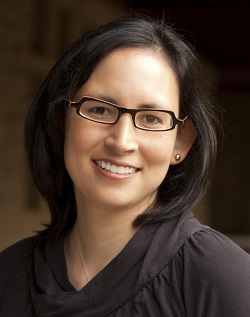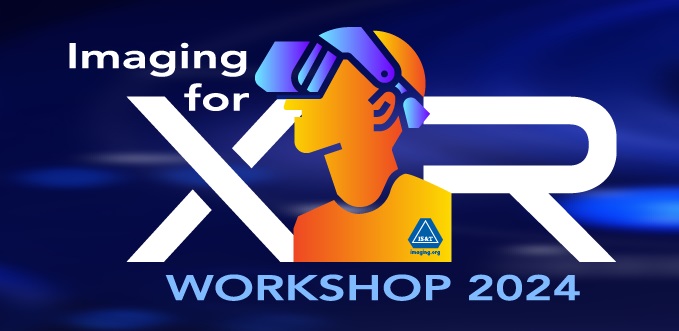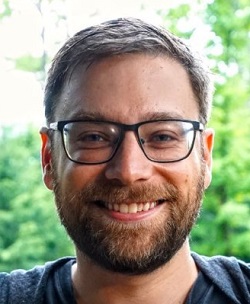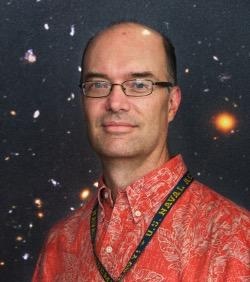

 









|
|
Advance Conference Program:

The World's Premier Conference for 3D Innovation
22 - 24 January 2024
- Hyatt Regency San Francisco Airport Hotel, Burlingame, California, USA -
Held as part of:
The IS&T International Symposium on Electronic Imaging: Science and Technology
21-25 January 2024
To be published open-access as part of the IS&T Proceedings of Electronic Imaging.
| |
| Conference Chairs: |
Nicolas S. Holliman, Kings College Longdon (UK)
Takashi Kawai, Waseda University (Japan)
Bjorn Sommer, Royal College of Art (United Kingdom)
Andrew J. Woods, Curtin University (Australia);
|
| Program Committee: |
Neil A. Dodgson, Victoria University of Wellington (New Zealand)
Gregg Favalora, Quadratic 3D, Inc. (USA)
Justus Ilgner, University Hospital Aachen (Germany)
Eric Kurland, 3-D SPACE Museum (United States)
John D. Stern, Intuitive Surgical, Retired (USA)
Chris Ward, Lightspeed Design, Inc. (USA)
Laurie Wilcox, York University (Canada)
|
|
Stereoscopic Displays and Applications Session 1
Stereoscopic Displays
Room: Grand Peninsula E
Session Chair: Nicolas Holliman, Kings College London (United KIngdom) |
Mon. 8:45 - 9:45 am |
8:45 am: SD&A - Welcome and Introduction
9:05 am : Optical Aberration Analysis of Light Field Displays: A Calibration Approach for Enhanced Performance, Qi Zhang, Yuta Miyanishi, Erdem Sahin, and Atanas Gotchev, Tampere University (Finland) [SDA-344]
9:25 am : Vergence-accommodation Conflict: Accommodation-enabled vs. Accommodation-invariant Near-eye Displays, Erdem Sahin, Tampere University, Ugur Akpinar, and Atanas Gotchev, Tampere University (Finland) [SDA-345]
9:45 am : Late News Paper: Can Aliens See in 3D?, Andrew J. Woods, Curtin University (Australia) [SDA-366]
| Session Break |
Mon. 10:05 - 10:40 am |
Stereoscopic Displays and Applications Session 2
Stereoscopic Camera Systems
Room: Grand Peninsula E
Session Chair: Andrew Woods, Curtin University (Australia) |
Mon. 10:40 am - 11:20 am |
10:40 am : 4K Stereoscopic Visualization of Robotic Microsurgery in Vascularized Free Tissue Transfer for Head and Neck Reconstruction, Justus Ilgner, Stephan Hackenberg, and Thien An Duong Dinh, Universitätsklinikum Aachen (Germany) [SDA-346]
11:00 pm : Manipulating Viewing Distance and Camera Toe-in in a Stereoscopic Remote Vision System, Eleanor O'Keefe and Eric Seemiller, KBR, and Marc Winterbottom and Steven Hadley, Air Force Research Laboratory (United States) [SDA-347]

 |
|
SD&A Keynote
|
Mon. 11:20 am - 12:20 pm
|
|
The Waking Dream:
Next Steps Toward Immersion Entertainment [SDA-348]
Aaron Parry,
President, SDFX Studios (United States)

Abstract:
Join us for an engaging discussion on the thriving landscape of 3D spatial entertainment and the exciting prospects it holds, especially with the advent of cutting-edge devices. This talk will delve into the synergy between technological advancements and compelling content, exploring how SDFX STUDIOS is at the forefront of this revolution. SDFX Studios has been involved in the 3D conversion of the following 3D Movies: Guardians of the Galaxy Vol. 3 (2023), Teenage Mutant Ninja Turtles: Mutant Mayhem (2023), Trolls: Band Together (2023), Aquaman and the Lost Kingdom (2023), and the recent 3D conversion of the classic Jaws (1975).
Biography:
As President of SDFX Studios, Aaron Parry oversees the creative vision and worldwide production and technology development. With deep roots in the animation industry, Aaron has spent over 20 years executive producing and supervising feature productions for major studios, including Paramount, Warner Bros., and Marvel Studios.
|
|

|
|
|
| Session Break |
Mon. 12:30 - 2:00 pm |
EI Plenary 1
Room: Grand Peninsula D
|
Mon. 2:00 - 3:00 pm
|
|
IS&T Welcome
 PLENARY: Seeing and Feeling in Robot-Assisted Surgery PLENARY: Seeing and Feeling in Robot-Assisted Surgery
Allison Okamura,
Richard W. Weiland Professor of Engineering, Stanford University (United States)

Abstract: Haptic devices allow touch-based information transfer between humans and their environment. In minimally invasive surgery, a human teleoperator benefits from both visual and haptic feedback regarding the interaction forces between instruments and tissues. This keynote discusses mechanisms for stable and effective haptic feedback, as well as how surgeons and autonomous systems can use visual feedback in lieu of haptic feedback. For haptic feedback, the focus is on skin deformation feedback, which provides compelling information about instrument-tissue interactions with smaller actuators and larger stability margins compared to traditional kinesthetic feedback. For visual feedback, the effect of training on human teleoperators' ability to visually estimate forces through a telesurgical robot is evaluated. In addition, the talk discusses how we design and characterize multimodal deep learning-based methods to estimate interaction forces during tissue manipulation for both automated performance evaluation and delivery of haptics-based training stimuli. Finally, the next generation of soft, flexible surgical instruments and the opportunities and challenges they present for seeing and feeling in robot-assisted surgery is described.
Biography: Allison Okamura is a professor in the Mechanical Engineering Department at Stanford University, with a courtesy appointment in computer science. She was previously professor and vice chair of mechanical engineering at Johns Hopkins University. She is also currently the editor-in-chief of the journal IEEE Robotics and Automation Letters. Her awards include the 2020 IEEE Engineering in Medicine and Biology Society Technical Achievement Award and the 2019 IEEE Robotics and Automation Society Distinguished Service Award, among many others. She is also an IEEE Fellow. Allison received a BS from the University of California at Berkeley and MS and PhD degrees from Stanford University, all in mechanical engineering. Her academic interests include haptics, teleoperation, virtual environments and simulators, medical robotics, soft robotics, neuromechanics and rehabilitation, prosthetics, and education. Outside academia, she enjoys spending time with her husband and two children, running, and playing ice hockey.
|
|
|
| Session Break |
Mon. 3:00 - 3:30 pm |
Conference Highlights 2024 Session
Room: Grand Peninsula D
|
Mon. 3:30 - 5:00 pm |
Join us for a session that highlights the breadth of EI with short papers selected by their Chairs from EI conferences.
The full papers are given at other times in the program.
Note that COIMG and HVEI will run papers concurrent with this session. |
Electronic Imaging Symposium Reception
Room: The Grove
The annual Electronic Imaging All-Conference Reception provides a wonderful opportunity to get to know and interact with new and old SD&A colleagues.
Plan to join us for this relaxing and enjoyable event. |
Mon. 5:00 - 6:00 pm |
Please note: Due to logistical limitations there will not be a 3D Theatre at SD&A 2024. We will try again for next year.
Imaging for XR Workshop
|
|
Thu. 9:00 am to 5:30 pm |

|
Imaging for XR Session 1
Session: Presentations I
Room: Grand Peninsula D
Session Chair: Susan Lakin, Rochester Institute of Technology (United States) |
Tue. 8:30 - 11:15 am |
8:30 am : Welcome, Bennett Wilburn, Google (United States)
8:45 am : AI-mediated 3D Video Conferencing with Real-time 2D-to-3D Face Lifting, Jonghyun Kim, NVIDIA (United States)
9:15 am : Privacy-preserving Visual Sensing with Applications in XR, Vrendan David-John, Virginia Tech (United States)
9:45 am : The perfect (3D) shot: AI-driven Techniques for Stereoscopic Image Capture and Conversion, David Fattal Nima Zeighami, Leia, Inc. (United States)
| Session Break |
Tue. 10:15 - 10:45 am |
10:45 am : Volumetric Video Technology in Sports and Entertainment: Current Applications and Future Prospects, Tsuyoshi Wakozono, Canon USA (United States)
Interacting with XR
Room: Grand Peninsula D and Regency
Session Chair: Bennett Wilburn, Google (United States)
Informal discussions led by our speakers, including the use of 3D displays and AR/VR headsets to experience the showcased technologies.
|
Tue. 11:15 am - 12:30 pm |
| Session Break |
Tue. 12:30 - 2:00 pm |
EI Plenary 2
Room: Grand Peninsula D
|
Tue. 2:00 - 3:00 pm
|
|
 PLENARY: Neural Radiance Fields PLENARY: Neural Radiance Fields
Jon Barron, senior staff research scientist, Google Research (United States)

Abstract: Neural Radiance Fields (NeRF) model 3D scenes using a combination of deep learning and ray tracing, wherein the color and volumetric density of a scene is encoded within the weights of a neural network. NeRF originally began as a technique for recovering a 3D model of a scene from a set of 2D images, thereby allowing new photorealistic views of that 3D scene to be rendered. But over time, NeRF has evolved into a general purpose framework for parameterizing and optimizing 3D scenes for a wide variety of applications such as computational photography, robotics, inverse rendering, and generative AI (eg, synthesizing 3D models from text prompts). This talks reviews the basics of NeRF, discuss recent progress in the field, demonstrate a variety of applications that NeRF enables, and speculate upon the impact that this nascent technology may have on imaging and AI in the future.
Biography: Jon Barron is a senior staff research scientist at Google Research in San Francisco, where he works on computer vision and machine learning. He received a PhD in computer science from the University of California, Berkeley, where he was advised by Jitendra Malik. He received a National Science Foundation Graduate Research Fellowship in 2009, the C.V. Ramamoorthy Distinguished Research Award in 2013, and the PAMI Young Researcher Award in 2020. His works have garnered awards at ECCV 2016, TPAMI 2016, ECCV 2020, ICCV 2021, CVPR 2022, the 2022 Communications of the ACM, and ICLR 2023.
|
|
|
| Session Break |
Tue. 3:00 - 3:35 pm |
Imaging for XR Session 2
Session: Presentations II
Room: Grand Peninsula D
Session Chair: Nicolas Bonnier, Apple (United States) |
Tue. 3:30 - 5:00 pm |
3:30 pm : The Time for Immersive 6DoF Content is Now, Victor Lempitsky, Cinemersive Labs (United Kingdom)
4:00 pm : Shipwreck Imaging for XR Applications, Andrew Woods, Curtin University HIVE (Australia)
4:30 pm : Perspective-Correct VR Passthrough, Grace Kuo, Meta Reality Labs (United States)
Group Discussion - Imaging for XR 2025
Session Chair: Bennett Wilburn, Google (United States)
Room: Grand Peninsula D
|
Tue. 5:00 - 5:30 pm |
Electronic Imaging Symposium Demonstration Session, Poster Session and Exhibits Happy Hour
Room: Regency
SD&A Demonstration Chair: Bjorn Sommer, Royal College of Art (United Kingdom)
|
Tues. 5:30 - 7:30 pm |
|
|
Demonstrations
A symposium-wide demonstration session will be open to attendees 5:30 to 7:30 pm Tuesday evening. Demonstrators will provide interactive, hands-on demonstrations of a wide-range of products related to Electronic Imaging.
The demonstration session hosts a vast collection of stereoscopic products providing a perfect opportunity to witness a wide array of stereoscopic displays with your own two eyes.
More information: http://www.stereoscopic.org/demo/index.html. |
Stereoscopic Displays and Applications Session 3
Human Factors and 3D Content Solutions
Room: Grand Peninsula E
Session Chair: Takashi Kawai, Waseda University (Japan) |
Wed. 8:45 - 10:05 am |
8:45 am : Welcome, Takashi Kawai, Waseda University (Japan)
8:50 am : The Effect of Stereoscopic Depth Distortion on the Near Oculomotor Response, Eric Seemiller1, Eleanor O'Keefe2, and Marc Winterbottom1; 1Air Force Research Laboratory and 2KBR (United States) [SDA-349]
9:10 am : Automatic Stereograph Feature Detection, Nicholas Routhier, CubicSpace (Canada) [SDA-350]
9:30 am : Successful One Man, Low Cost, 3D CGI Feature Film Conversion, Enrique Criado, 3d Experiences Iberia (Spain) [SDA-351]
9:50 am : What Do We Know About Apple's New Spatial Video Format?, Andrew Woods and Michael Wiebrands, Curtin University HIVE (Australia) [SDA-352]
| Session Break |
Wed. 10:10 - 10:40 am |
SD&A Discussion Forum
Room: Grand Peninsula E
|
Wed. 10:40 - 11:40 am
|
|
Discussion Forum: 3D Video Streaming - Solutions and Opportunities
2D  3D
3D 
Moderator:
Bjorn Sommer, Royal College of Art (United Kingdom)
Panellists:
Nicholas Routhier, CubicSpace (Canada)
Eric Kurland, 3-D SPACE Museum (United States)
Andrew Woods, Curtin University HIVE (Australia)
Topic Desription:
There have been hundreds of Blu-ray 3D disc releases, however the release of new titles is slowing. At the same time, streaming services are increasing their market share. Unfortunately most streaming services, and none of the major services (such as Disney+, Netflix, Amazon Prime Video, etc) currently support 3D content, despite their libraries including many titles which have 3D versions. New 3D TVs haven't been sold to consumers since 2017, but despite that there still remains millions of 3D TVs in people's homes. Additionally, 3D projectors are still available new from mainstream sources. The popularity of 3D content remains high, as illustrated by the very high sales of the Blu-ray 3D version of "Avatar: The Way of Water". Currently there are only two 3D content streaming services – Vudu 3D, and also LeiaFlix for the the Lumepad 3D tablet. In the past there were other 3D streaming services, such as 3DGO! But that may all be about to change. The release of the Apple Vision Pro headset on February 2 will likely trigger a renewed interest in 3D content. Apple has announced a 3D video streaming format, and Apple TV is gearing up for 3D content delivery, with 150 titles teased for availability. Will these titles only be available to the Apple Vision Pro headset, or will they also work with Apple TV 4K and 3D TVs? Other video streaming services could also offer 3D content in a heartbeat. Are we on the edge of a new 3D streaming revolution?
|
|
|
Stereoscopic Displays and Applications Session 4
Virtual Reality I
Room: Grand Peninsula E
Session Chair: Bjorn Sommer, Royal College of Art (United Kingdom), and Sharad Sharma, University of North Texas (United States)
JOINT SESSION: This session is jointly sponsored by: Stereoscopic Displays and Applications XXXV
and Engineering Reality of Virtual Reality 2024.
|
Wed. 11:40 am - 12:20 pm |
11:40 am : Comparative Analysis of User Experience in Virtual Reality (VR) and Mixed Reality (MR) Systems Using Eye- Tracking Measurements, Yoshihiro Banchi, Yusuke Ohira, Mahiro Ito, and Takashi Kawai, Waseda University (Japan) [SDA-353]
12:00 pm : Virtual Reality (VR) Space for Radiation Oncology Education and Collaborative Learning, Kulbir Sandhu and Marie Vans, Colorado State University (United States) [SDA-354]
| Session Break |
Wed. 12:30 - 2:00 pm |
EI Plenary 3
Room: Grand Peninsula D
|
Wed. 2:00 - 3:00 pm
|
|
 PLENARY: Imaging the Universe: NASA Space Telescopes from James Webb to Nancy Grace Roman and Beyond PLENARY: Imaging the Universe: NASA Space Telescopes from James Webb to Nancy Grace Roman and Beyond
Joseph M. Howard, optical designer, NASA (United States)

Abstract: Astronomy is arguably in a golden age, where current and future NASA space telescopes are expected to contribute to this rapid growth in understanding of our universe. A summary of current space assets is given, including the James Webb Space Telescope (JWST), NASA's most recent addition. Future telescopes are also discussed, including the Nancy Grace Roman Space Telescope (RST) and the Laser Interferometer Space Antenna (LISA), as well as mission concept studies for the Habitable Worlds Observatory (HWO).
Biography: Joseph M. Howard serves as an optical designer for NASA, working on projects including the James Webb Space Telescope, the Roman Space Telescope, LISA, and the other future space missions. He received his BS in physics from the US Naval Academy in Annapolis, Maryland, and his PhD in optical design from The Institute of Optics, University of Rochester, in Rochester, New York. Joe lives with his wife, two children, and dog and cat in Washington DC. |
|
|
| Session Break |
Wed. 3:00 - 3:30 pm |
The Engineering Reality of Virtual Reality 2024
Virtual Reality II
Room: Grand Peninsula E
Session Chair: Sharad Sharma, University of North Texas (United States), and Bjorn Sommer, Royal College of Art (United Kingdom)
JOINT SESSION: This session is jointly sponsored by: Engineering Reality of Virtual Reality 2024 and Stereoscopic Displays and Applications XXXV. |
Wed. 3:30 - 4:50 pm |
3:30 pm : VR Visualization of Avian-Human Perspectives for Co-Design Practices supporting Empathy Building and Perspective Shifts, Tori Simpson 1, Harry Hosker 1, Tokushu Inamura 2, Melanie Sarantou 2, Yasuyuki Hirai 2, and Bjorn Sommer 1; 1Royal College of Art (UK) and 2Kyushu University (Japan) [SDA-355]
3:50 pm : JIST-first: Spatial Analysis and Visual Communication of Emergency Information through Augmented Reality, Sharad Sharma and Rishitha Reddy, Pesaladinne University of North Texas (United States) [ERVR-180]
4:10 pm : Real-time Stereoscopic Image-parallel Path Tracing, Erwan Leria and Markku Mäkitalo, Tampere University (Finland) [ERVR-181]
4:30 pm : Interactive Aviation Maintenance Classroom, LaTasha Starr, consultant, and Marie Vans, Colorado State University (United States) [ERVR-182]
|































 PLENARY: Seeing and Feeling in Robot-Assisted Surgery
PLENARY: Seeing and Feeling in Robot-Assisted Surgery
 PLENARY: Neural Radiance Fields
PLENARY: Neural Radiance Fields

 PLENARY: Imaging the Universe: NASA Space Telescopes from James Webb to Nancy Grace Roman and Beyond
PLENARY: Imaging the Universe: NASA Space Telescopes from James Webb to Nancy Grace Roman and Beyond
